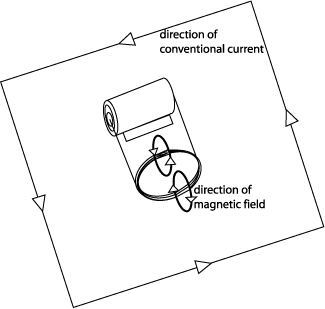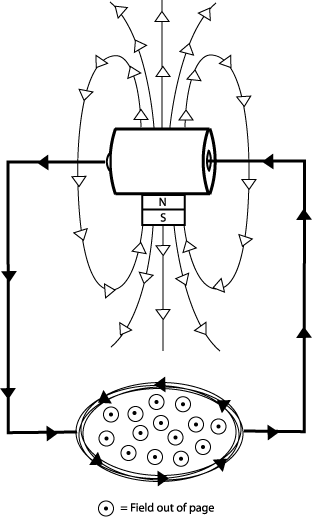|
|
|
|
| Solutions |
|
Q1: My motor armature
had a resistance of 0.015 ohms. Assuming the 1.5V battery could
drive a constant current through this coil at rest, what would
the current be? Q4: An actual measured current flow through the coil is about 5 A. What magnetic field does this produce in an ideal coil? Draw the direction of this field in a diagram showing the coil.
Q5: Why is the permanent magnet stuck to the D cell needed in our motor? The permanent magnet provides an external field for the field produced by the coil to oppose. It is the interaction of the two fields that exerts a torque on the coil. Q6: Sketch
and describe the magnetic fields in this motor, including how
they change direction.
Q7: View the motor
in the dark. What do you see at the paper clip/armature connections?
Why? Q8: An engineer could claim that this motor should simply lock itself into a single position, and the motor does have a tendency to do so. What is this (electrically powered) position? Why does it not continuously lock in this position? This position is when the coil is perpendicular to the field
of the permanent magnet such that the two fields are parallel
and in the same direction. If the current through the coil was
constant, any displacement from this position would result in
a field interaction creating a torque that would tend to oppose
the motion of the coil. These motors do not lock in this position
because the enamel insulation is removed form only on half of
the armature. When the motor reaches this position the current
is interrupted and the coil rotates through the second half of
its cycle due to its rotational inertia. Q9: A second
magnet can be brought beneath the coil and can either slow or
accelerate the armature's rotation (see below). Explain why,
using a diagram. |
|
|
|
|

